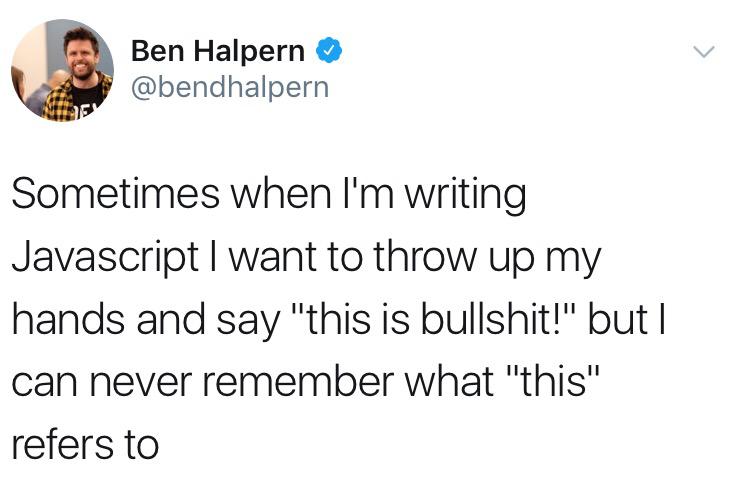Ranter
Join devRant
Do all the things like
++ or -- rants, post your own rants, comment on others' rants and build your customized dev avatar
Sign Up
Pipeless API

From the creators of devRant, Pipeless lets you power real-time personalized recommendations and activity feeds using a simple API
Learn More
Comments
-
 asgs109355yNot a JS dev, so nothing constructive for you, but this post has a few redundant statements which makes reading a little bit difficult. I got the crux only after reading it twice
asgs109355yNot a JS dev, so nothing constructive for you, but this post has a few redundant statements which makes reading a little bit difficult. I got the crux only after reading it twice
Maybe add a TLDR at the top? -
 asgs109355y@AmyShackles the statements regarding OrdinaryToPrimitive are there too often. They could be established as rules in a "Context" section. The other two sections could simply walkthrough how it is in effect for those two operands
asgs109355y@AmyShackles the statements regarding OrdinaryToPrimitive are there too often. They could be established as rules in a "Context" section. The other two sections could simply walkthrough how it is in effect for those two operands -
 Voxera108805yThe third paragraph under toPrimitive([]) seams identical to the same under toPrimitive({}) which causes me to reread it to try to understand the difference which is not there.
Voxera108805yThe third paragraph under toPrimitive([]) seams identical to the same under toPrimitive({}) which causes me to reread it to try to understand the difference which is not there.
Since this is a general description of how toPrimitive works without specifics it only needs to be there once, either under the section for {} or possibly before.
Then there is the part where you explain what toString returns, first [object Object] then “”.
But since both is an object I would have liked more explanation why they result in different strings.
That part is just stated as a fact with no explanation to why, which in my opinion is very important for the understanding.
So in my opinion the explanation cones up short of the goal, why does toString return different values for two different objects. -
 Voxera108805yBut just so I do not come across as to critical, I could not spot any obvious errors in the actual information :)
Voxera108805yBut just so I do not come across as to critical, I could not spot any obvious errors in the actual information :) -
@Voxera Good point with the reason why they result in different strings. Good looking out!
-
My only thought is there should be an introductory paragraph as to why I'm reading it. It feels a bit like a knowledge dump a reader may lack context for. Just needs a short abstract (no pun intended) paragraph with an example explaining the novelty in question.
-
 irene32735yTechnically good.
irene32735yTechnically good.
I assumed that everyone uses === in comparisons now. What is the use case for doing those comparisons? It seems like it would confuse another dev. Or is this a demonstration of a language quirk? -
@irene It was just an example to see the output of toPrimitive in a different context. If you were to use a strict equality comparison, it wouldn't attempt to convert to primitive first (since they're different types).
-
SEO wise
Title too short and non-descriptive, it will be impossible to search this title in search engines
Section headings are also non-descriptive, Single word headings are not recommended,
Instead of linking to TLDR, you might place TLDR on top.
Content wise
Feels empty, I know it's just supposed to answer a question, but, didn't feel like I am reading something great.
So, over-all, make the sections more meaningful and add value to the readers. -
Second paragraph under OrdinaryToPrimitive is kind of hard to follow - I feel like I'm missing some "why". Knowing the rationale behind why they designed it like this would help greatly in understanding it.
The rest is quite clear. I really appreciate the links to the Ecmascript standards. This is probably the clearest explanation of this property I've seen in writing. Nice one.

 This never gets old...
This never gets old... Exactly
Exactly ¯\_(ツ)_/¯
¯\_(ツ)_/¯
Can someone please read this article and sanity check me that it makes sense outside of my head and I’m not actively putting garbage out into the world?
https://amyshackles.codes/why-is-em...
I would greatly appreciate it.
rant
javascript
relational comparison